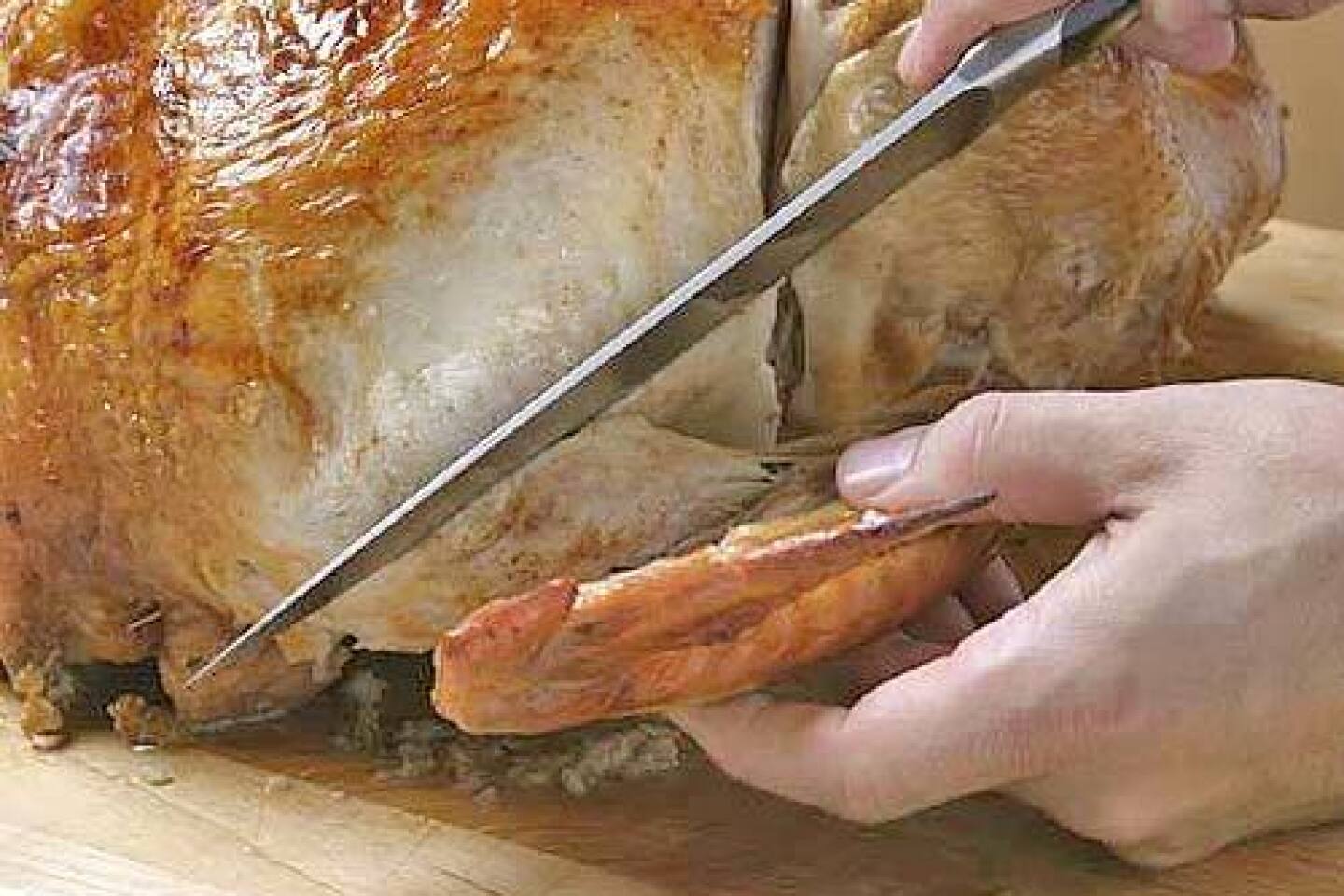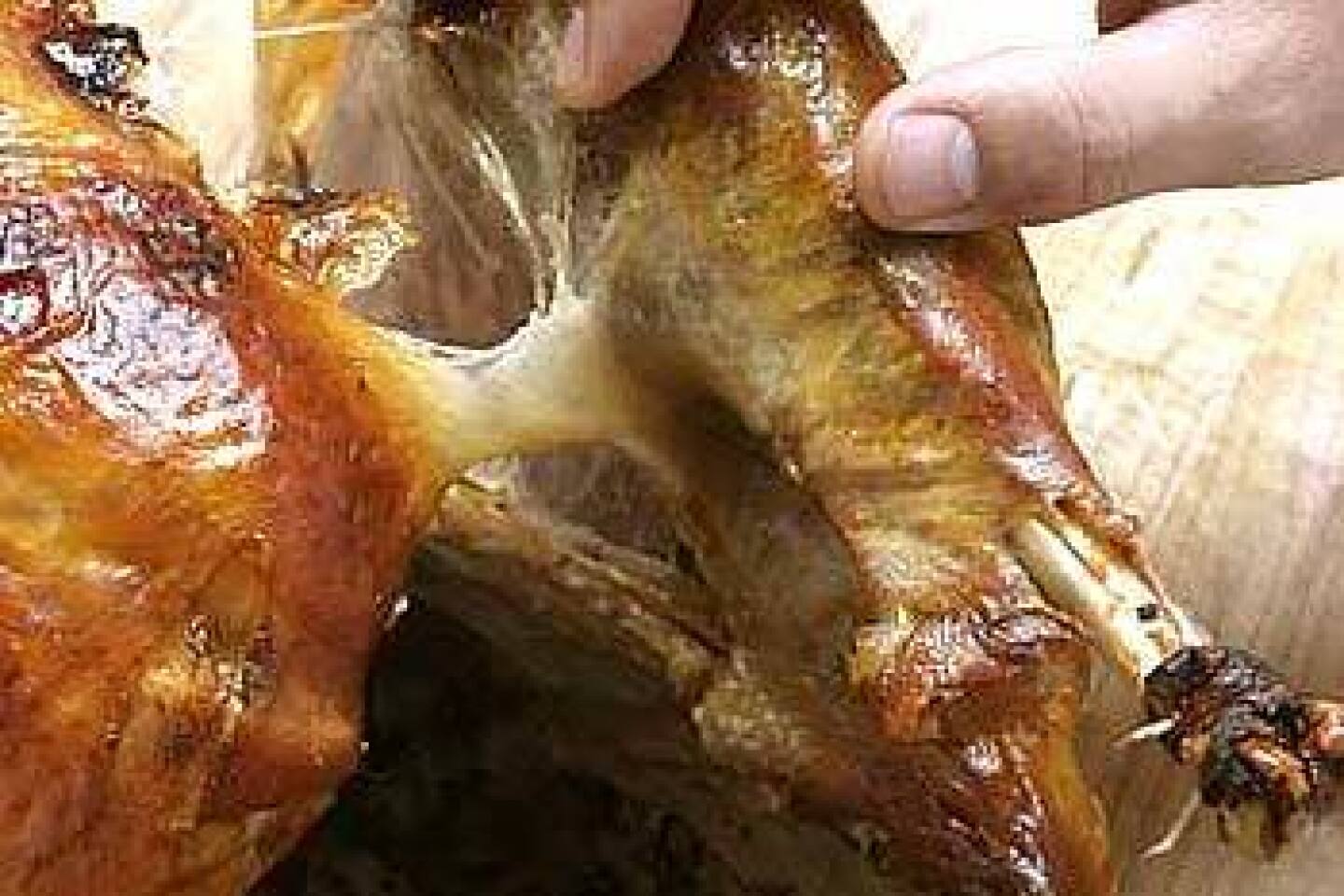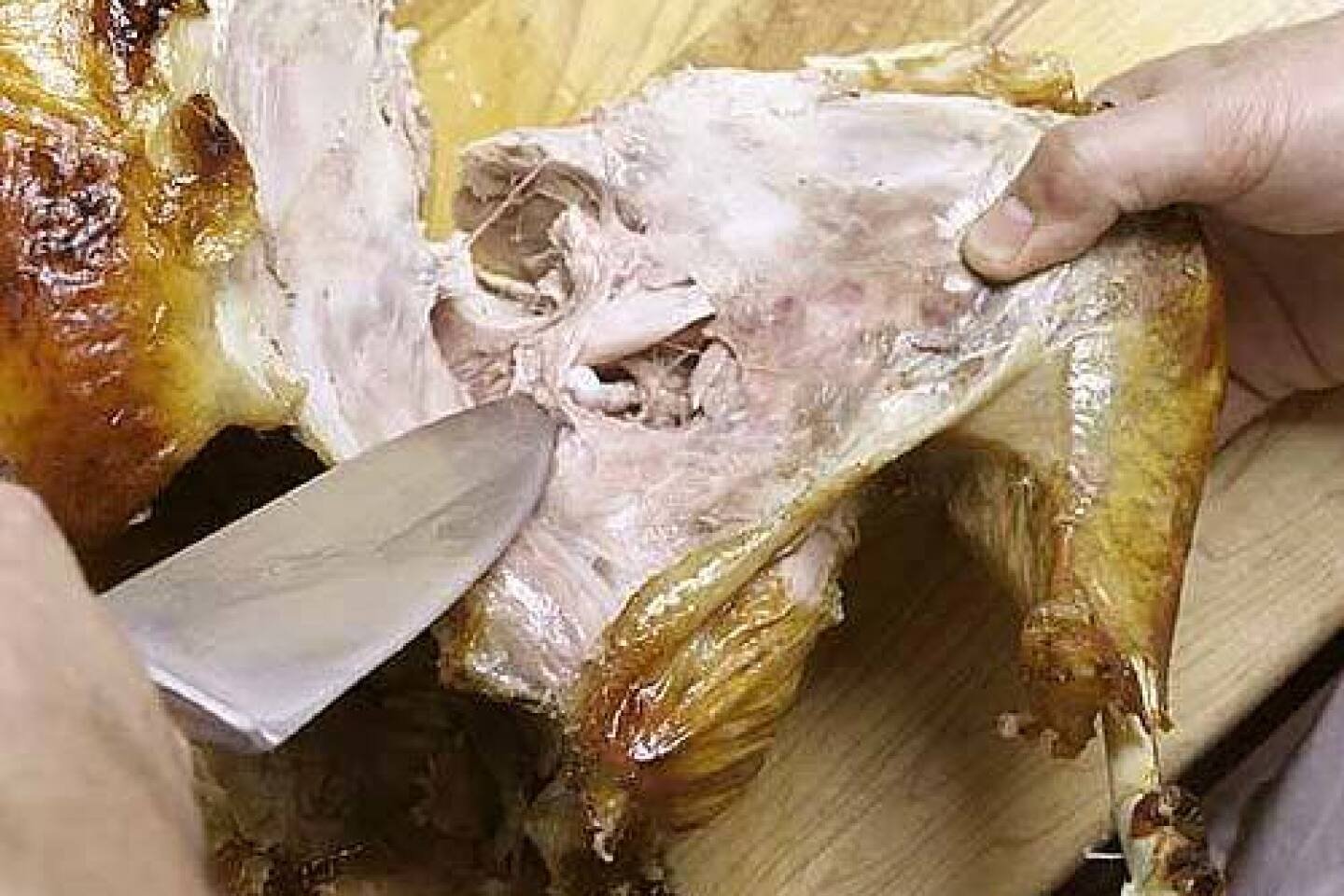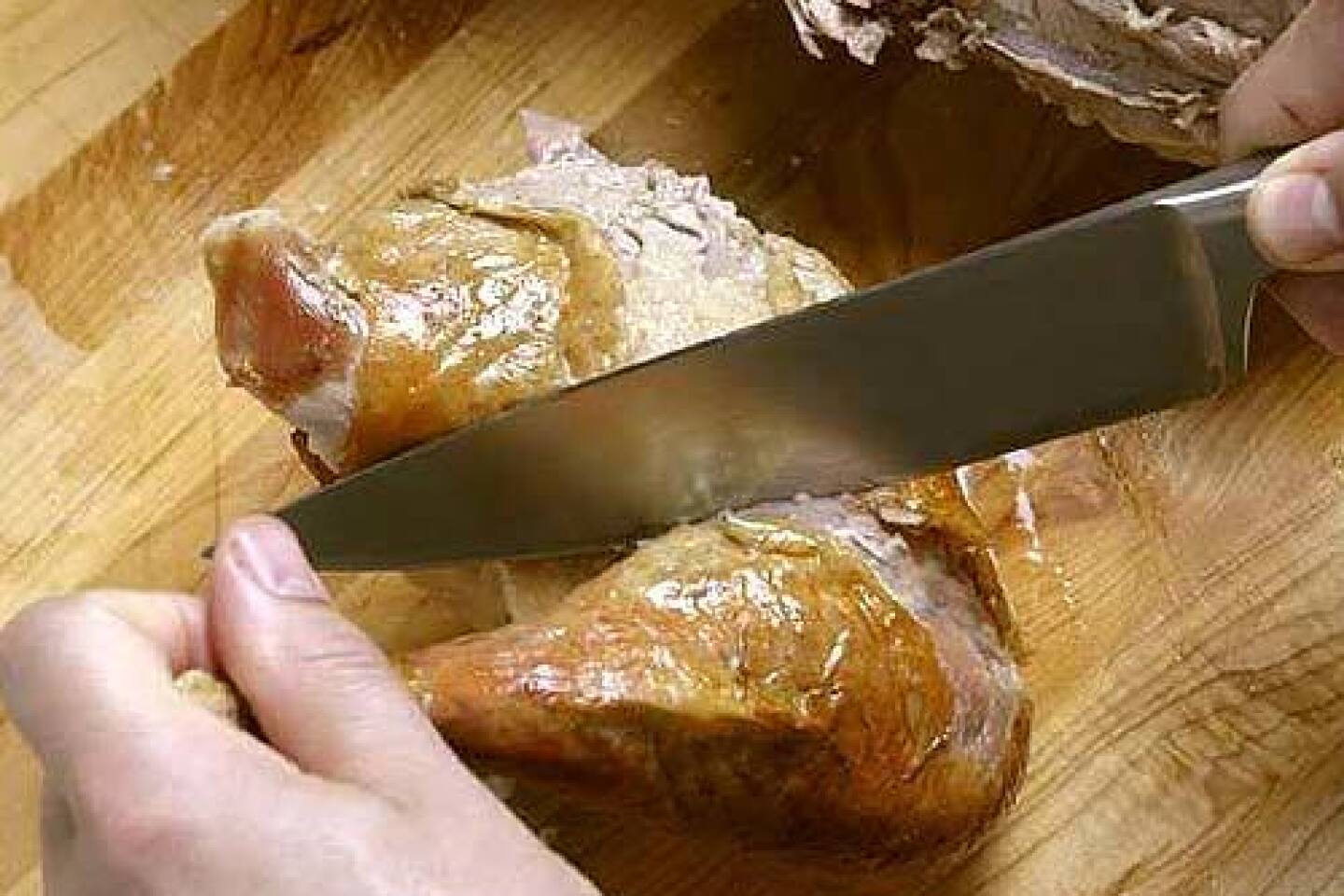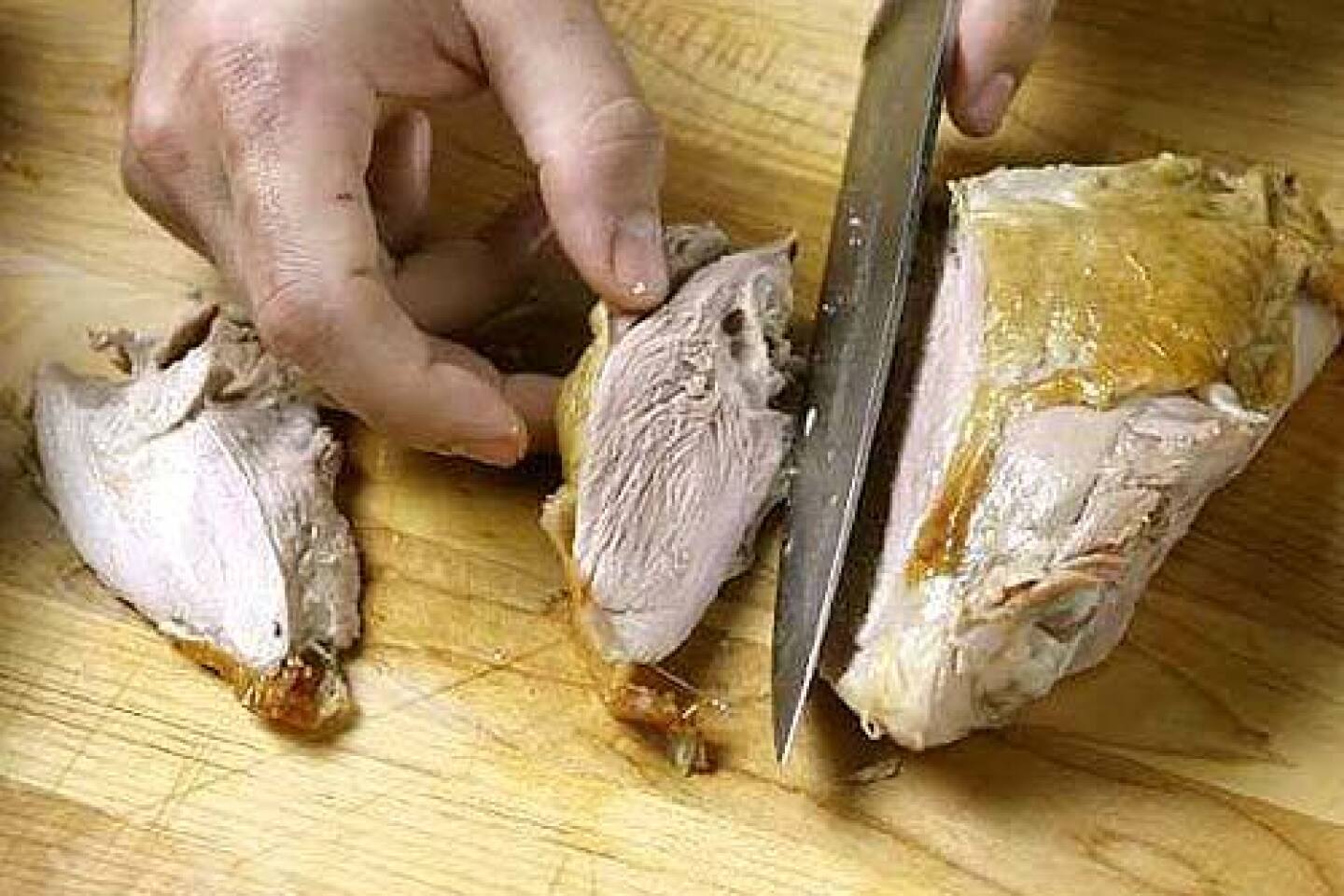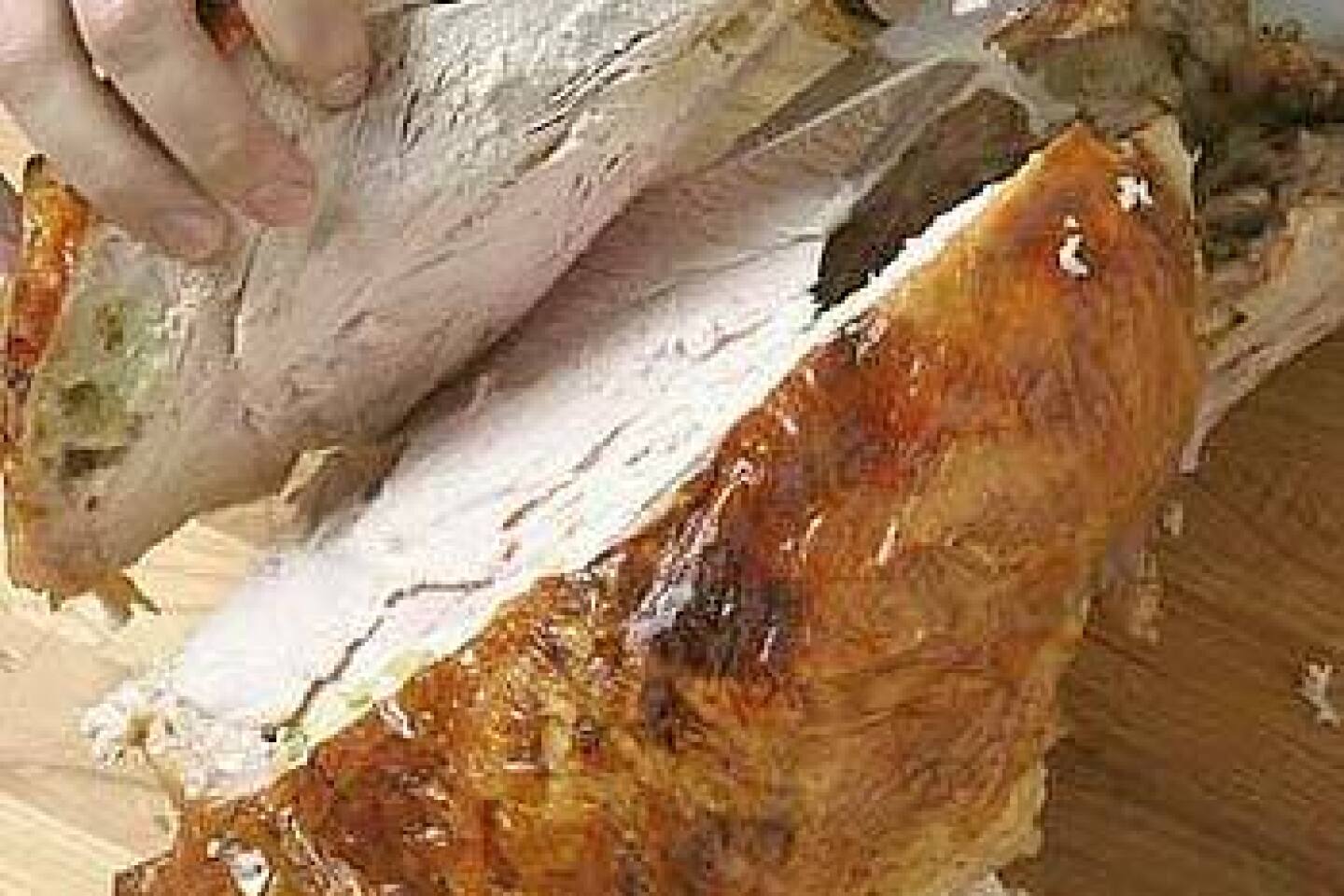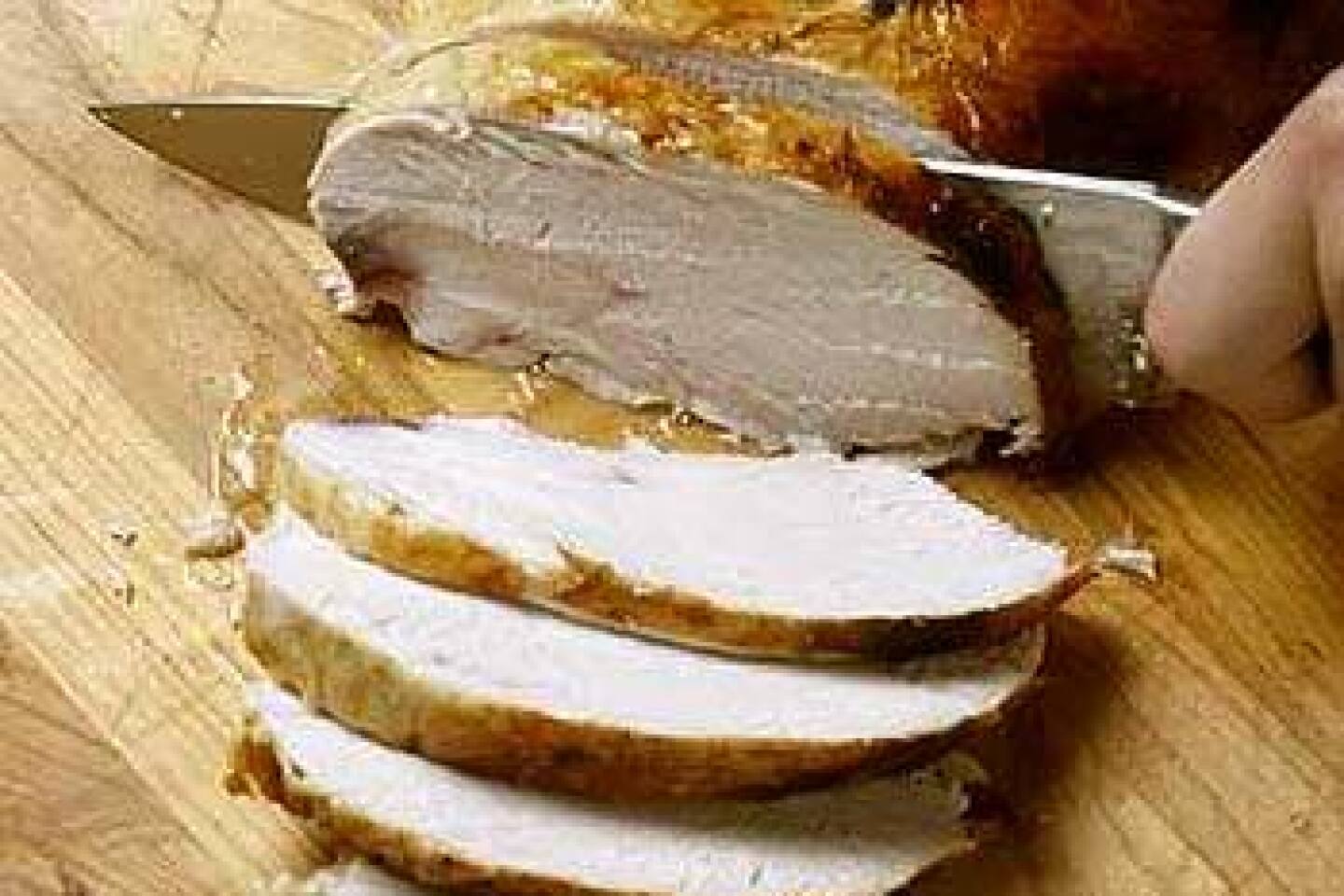The final flourish
THERE comes a Thanksgiving in the life of every cook when someone hands over the ceremonial long knife and fork and asks, “Will you do the honors?” It is a moment fraught with meaning. Of all the rituals associated with the holiday table, none can approach the carving of the turkey.
You may be able to whip hollandaise in your sleep. Your soufflés may be lighter than air. You may even have roasted a perfect turkey. But until you can artfully pare that bird into its respective parts, you’re leaving the star turn to somebody else.
When that climactic moment comes, there is only one thing to do. Step forward bravely, take a deep breath and relax, secure in the possession of one very important secret: carving a turkey is really pretty simple.
Anyone who’s presided at the head of the Thanksgiving table remembers that first time. Mine came even before I’d really begun to cook — and at my future mother-in-law’s house to boot. I was sitting innocently in the den with the rest of the guys, watching football, when she popped the dreaded question. There was nothing I could do but go along. After several minutes of sawing away, I had to call my wife over to ask her where in the world the dark meat might be hiding.
I have carved a lot of turkeys since then, and though no one has yet compared my skill with the carving knife to that of an artist and his brush, I get the job done — cleanly and efficiently, if sometimes a little short of artistically.
And therein lies the first lesson of carving: It is not a performance piece. Forget all those pictures of Dad cutting up the turkey as an appreciative family looks on. Norman Rockwell was a painter, not a cooking instructor. And while you’re at it, forget the notion that carving is dad duty. There is nothing about it that requires a Y chromosome.
The careful carving of a bird as big as a turkey is a project that will take at least 10 minutes for all but the most gifted. For your guests, that means 10 minutes of staring hungrily at moist, fragrant meat while they try to assuage their pain by tipping back more and more of the dinner wine. If that’s not a recipe for a riot, I don’t know what is.
For the sake of your friends and dinner table decorum, carving should be done in private. If you must have applause, parade the whole bird on its platter first, then retreat to the kitchen for the actual surgery.
Besides, carving alone means you can exercise your cook’s prerogative and nibble as much as you want without having anyone make physical threats (hint: the little morsel of dark meat just above the hip bone is especially choice).
Yet another thing carving in the kitchen does is free you from having to use the ceremonial knife. Almost all of them are dreadfully unsuited for the task — not only are they too flexible, they are next to impossible to sharpen adequately. What you need for carving a turkey is a very sharp knife with a fairly stiff blade. If you don’t have a good carving knife, an all-purpose knife works well, as does a regular chef’s knife.
*
Clearing the path
BE sure to let the turkey rest for at least 30 minutes, preferably 45, before carving. This lets the juices settle and redistribute evenly throughout the meat. Tent it with aluminum foil to keep it warm.The first step in carving is to remove the wings and the legs, clearing a path to the breast meat. The wings go first — make a 45-degree slice at the joint and you can usually cut right through it. Remove the legs by grabbing the knee and pressing it down, away from the carcass. This will expose the hip joint, which you can pop out using the tip of the knife, then simply cut the leg free at the base.
Cut the wing in two at the elbow (most cooks prefer to remove the actual wing tip prior to roasting and use it in the stock). Cut the leg in two at the knee. Carve the thigh in thick pieces along the grain. You’ll be able to get a couple of nice slices of dark meat out of the drumstick before you hit tendon. People who like dark meat tend to like bones too, so don’t be shy about including them on the platter.
While carving, try to keep the meat skin-side up. You’ve worked hard to make it crisp, it would be a shame to let it get soggy from soaking up the collected juices on the carving board.
Once your way to the breast is clear, you can begin to work on the white meat. There are two approaches to this. The first and most familiar — carving the breast into thin lengthwise slices — is, alas, not the best way. Cut with the grain like this, the slices tend to fall apart, especially if the breast is the least bit dried out. Furthermore, the first slice will get the lion’s share of the skin, leaving the others skimpily covered.
*
The proper balance
UNLESS this tradition is deeply important to you, you’re better off with a different approach: Carve the breast across the grain. This gives you uniform, whole pieces even if the bird is a little more than perfectly done, and every bit of slightly overdone outer meat will be balanced by a moist piece of inside meat. Even better, it ensures that each slice carries a piece of skin.To carve this way, begin by separating both breasts from the carcass. Make a long slice on either side of the narrow “keel” bone that runs down the center of the breast. Lift the breast meat away, either with a carving fork or your fingers, as you cut where the meat attaches to the ribs. The breasts should come free in two neat lobes.
Now you can pin the meat to the board with your carving fork and cut the breast crosswise into neat slices that will hold together no matter how thin you slice them. Slicing on a slight bias will give you bigger, more attractive pieces.
Arrange the turkey neatly on the platter. I usually put the carved dark meat at one end and the bones at the other, leaving the middle open for the white meat. The way most platters are constructed, the carving juices from the dark meat will run to the center and help keep white meat moist.
If you’re still a little nervous, practice a couple of times on chickens — the architecture is the same. That way, at least you’ll know where the dark meat is hiding when you face down that big bird on Thanksgiving.
*
(BEGIN TEXT OF INFOBOX)
The tool: carving knife
You’ll find all kinds of things labeled as carving knives. Most of them are more for show than anything else. There are three things you should look for in a good carving knife. It should be long enough that you can comfortably slice in long, clean strokes without having to saw back and forth, which breaks up the meat. The minimum length is probably 8 inches — 9 or 10 is even better. It should be stiff enough that you can use the tip to pop out joints (if the knife’s flimsy, you’ll end up wrestling the turkey all over the cutting board to cut the leg free). Finally, it should be sharp; it’s worth taking your knife to a sharpener the week before for a touch-up. If you don’t have a carving knife — and it is a fairly specialized tool — you can also use an all-purpose knife that is long enough, or even a chef’s knife.
— Russ Parsons
More to Read
Eat your way across L.A.
Get our weekly Tasting Notes newsletter for reviews, news and more.
You may occasionally receive promotional content from the Los Angeles Times.
